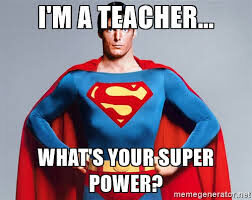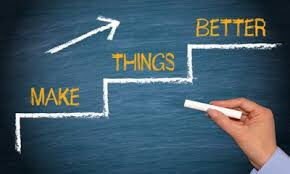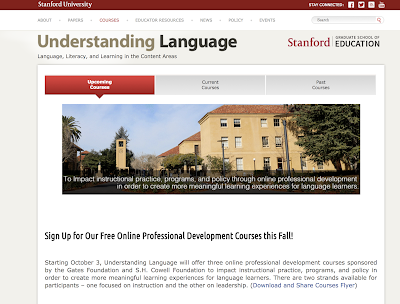7 Reflective Strategies to Improve your Teaching Practice
Reflective Teaching is a habit of mind that requires consciously thinking about how teaching practices impact students’ learning.
According to Kennedy (1989) reflective teaching promotes a thoughtful, contextualized view of teaching from which teachers learn how to make choices about educational goals and practices. Just as we hope our students will show growth over time, as teachers we can show growth in our practice if we take the time to reflect.
Professional growth can occur if we first look back on our practice to draw conclusions about events, then change our behaviors as a result of research, knowledge and reflection. Teachers can become empowered decision makers, engaging in systematic reflection of their work by thinking, writing, and talking about their teaching; observing the acts of their own and others teaching and by gauging the impact of their teaching on their students’ learning (Farrell, 2004).
Here are 7 strategies to help you reflect on your teaching practice.

1. Stay committed to your personal practice: Growing in your professional practice means staying committed to learning as a student. The field of education is constantly changing and as it changes so must we in our practice. Attending professional development series and events will help you stay current and learn what works best in your field. You can attend online professional development for free from Stanford. After attending a professional development event, teachers should take the time to think about ways they can incorporate new strategies into their practice. Take time to share new practices with your colleagues.
2. Connect to colleagues: There is no doubt that teaching can be an isolating profession and unless we have an opportunity to engage with our colleagues then there will be little time for dialogue about our practice. Rather than sitting in your classroom, meet with a colleague or have lunch in the teachers’ lounge. Connecting with colleagues can also take place when you get involved with school-wide councils or professional development committees. Teachers stay connected to colleagues through grade-level PLC’s. Teachers meet weekly to plan lessons or common assessments so that a reflection is a collaborative event in which teachers share strengths and weaknesses as a team. No time to meet face to face, use Google Tools and Google sites to share resources, join a Facebook Group to connect with other teachers, and use Google Hangouts to meet virtually. 3. Your best teacher: Your students will always be your best teachers so listen to what they say and don’t say. Observe their behaviors and reactions and take the time to think about how you can learn from their failures and success. You can create a survey to give your students mid-semester in which you ask them questions such as “What do you like best?” or “What is an area in which I can improve”. After I surveyed my students I was surprised to find out students felt I talk to fast. Once I made it a point to slow down and check for student understanding I was amazed to see how many students showed improvement. We are not perfect and as a teacher, it can be difficult to step outside ourselves and think about what the students perceive.
4. Be patient in your students’ growth and compassionate in their struggles: I had a student who struggled with math, she was in the sixth grade and working at a third-grade level. When she informed me she had lost her brother in the third grade I knew why she was so far behind. Take the time to connect with your students and learn where their struggle originates. Your most challenging student can also be your most relevant teacher. If you have a student who is constantly questioning you, ask yourself “Do I give students an opportunity to ask questions?” If your student is off-task and bored ask yourself “Do I give students enough time to collaborate with peers and engage in a challenging task that will require them to problem solve or think critically?”
5. Stay connected to your personal practice: Your personal practice defines you as a teacher. Often when you begin teaching you to become so overwhelmed with mandates and directives that your practice fades. Take the time to plan a project-based learning activity, technology-based lesson or constructivist approach to problem-solving. Think about the theories and strategies you learned while in graduate school or student teaching and make a plan to implement them. Invite colleagues, administrators, or coaches to observe your practice and provide constructive feedback. Sometimes just having another person in the room with whom you can talk openly about pedagogy will allow you to reflect at the moment.
6. Technology Tools: With the explosion of social media reflecting can take place on a virtual platform. Critical reflection can take place when you have an opportunity to discuss the goals and purposes of schooling and ASCD Edge provides the opportunity to connect with colleagues and share ideas, concerns or issues relate to topics. Teachers can use tools such as Blogs to share ideas with colleagues or students. In addition, tools such as Survey Monkey can be used to collect data for reflection.
7. Engage in Action Research: Action Research is one way that teachers can incorporate data into their reflection. Data is used to determine what effect teaching practices have on student achievement. Teachers select an aspect of their own practice and conduct an in-depth inquiry. Research is used to examine previous studies and significant findings. From this approach, teachers decide what action to take, how they will implement their actions, and then evaluate how the actions impact student learning.
Reflective teaching is key to professional growth in teaching and it begins by looking at what you do in the classroom. We can explore our practices and beliefs when we take the time to record what is happening and evaluate what this information means.
In “How We Think”, Dewey (1933) defined reflective thought as the “active, persistent, and careful consideration of any belief or supposed form of knowledge in the light of the grounds that support it and the further conclusion to which it tends” (p.9) Without evidence our beliefs and our assumptions will cause us to think in a way that protects our ego. Akbari (2007) states, “Teachers’ personality, and more specifically their affective makeup, can influence their tendency to get involved in reflection and will affect their reaction to their to their own image resulting from reflection” Reflection is a tool to self-assess your practice. Once you have collected this information, plan a course of action so that you can implement change. You might decide to find more research on an area where you need improvement, attend a conference, or read magazines or books related to the topic for which you are seeking information. Once you begin to implement changes be sure you take the time to reflect once again. Reflection is a continuous cycle that begins once you develop the habit of mind to think about your practice.
What’s in your teaching toolbox to support you in reflective practices? Join our Facebook group and engage in a digital discussion.






